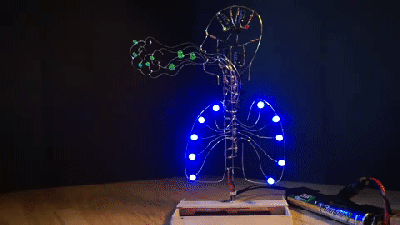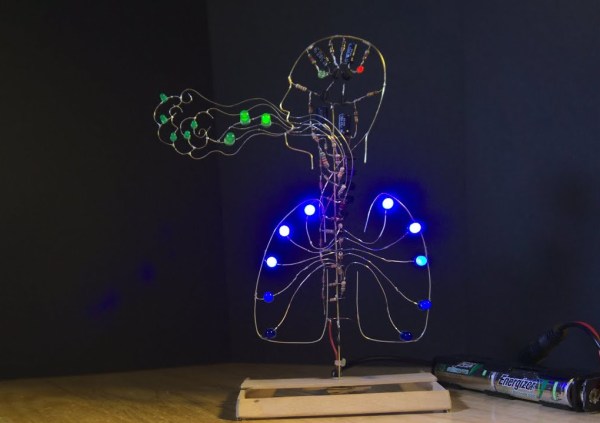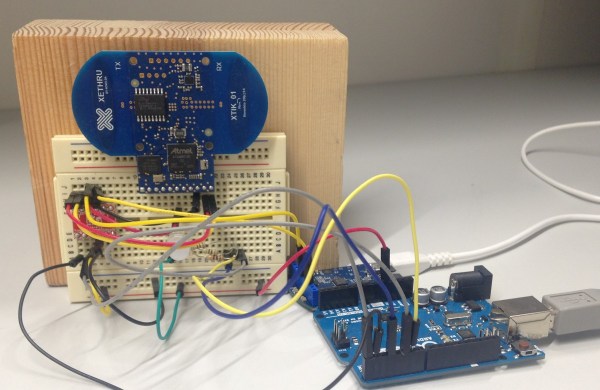We’ve probably all given a lot of thought to breathing this year in various contexts. Though breathing is something we all must do, this simple act has become quite the troublemaker in 2020. They say the best art imitates life, and [bornach]’s Astable Exhalation certainly does that, right down to the part about astability. It’s especially interesting that the end result — breathing, visualized — is so calming, it could almost be a meditative device.
 There is nary a microcontroller to be found on this circuit sculpture, which uses a pair of astable multivibrator(s) to light two sets of LEDs that represent air being inhaled and exhaled. We like that [bornach] used two sized of exhale LEDs to represent droplets and aerosols in this beautiful circuit sculpture, and we love that most of the components were scavenged from old electronics and older projects.
There is nary a microcontroller to be found on this circuit sculpture, which uses a pair of astable multivibrator(s) to light two sets of LEDs that represent air being inhaled and exhaled. We like that [bornach] used two sized of exhale LEDs to represent droplets and aerosols in this beautiful circuit sculpture, and we love that most of the components were scavenged from old electronics and older projects.
Our Circuit Sculpture Challenge runs until November 10th, so even if you’re waiting to take the Remoticon workshop before entering, there’s still a little bit of time to whip something up afterward in the post-con adrenaline rush phase. If you need inspiration, check out some of the other contest entries or just surf through all things circuit sculpture.
Continue reading “Circuit Sculpture Breathes Life Into Discrete Components”














